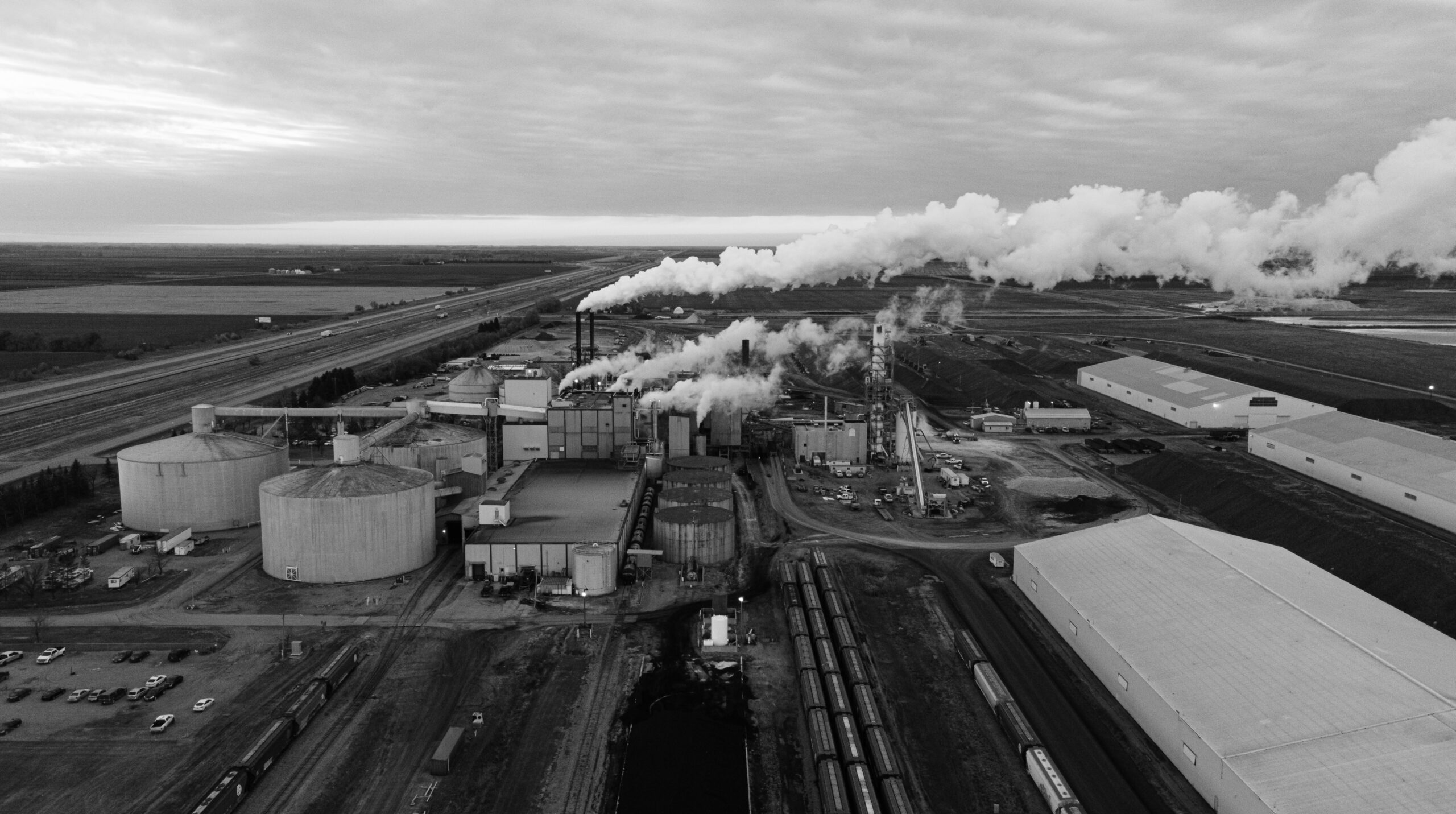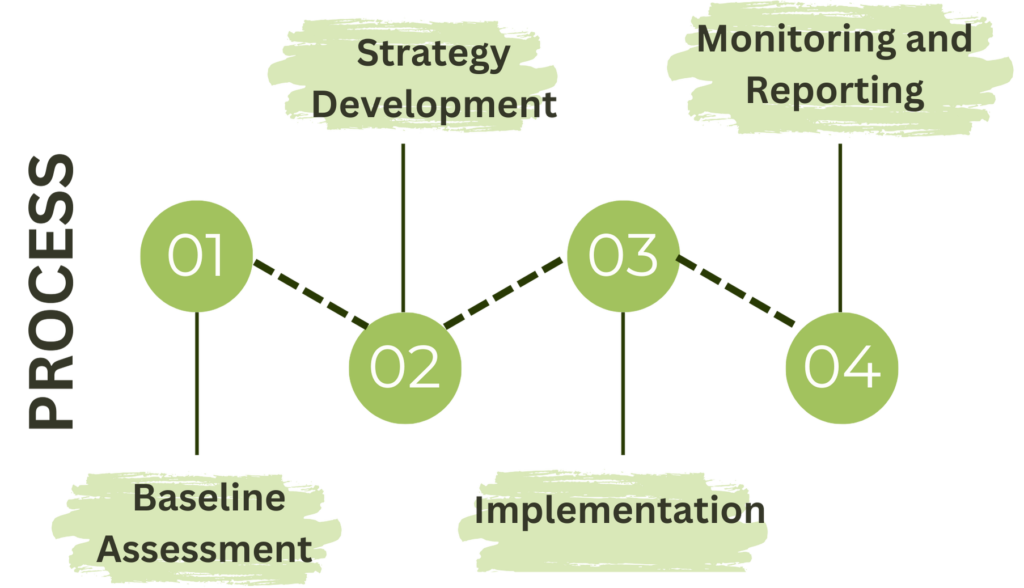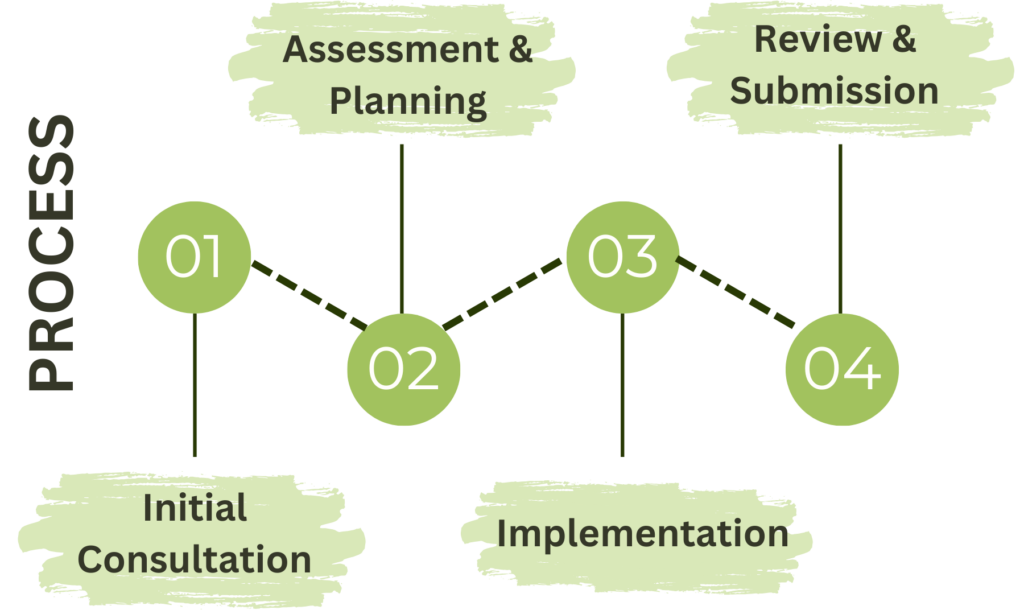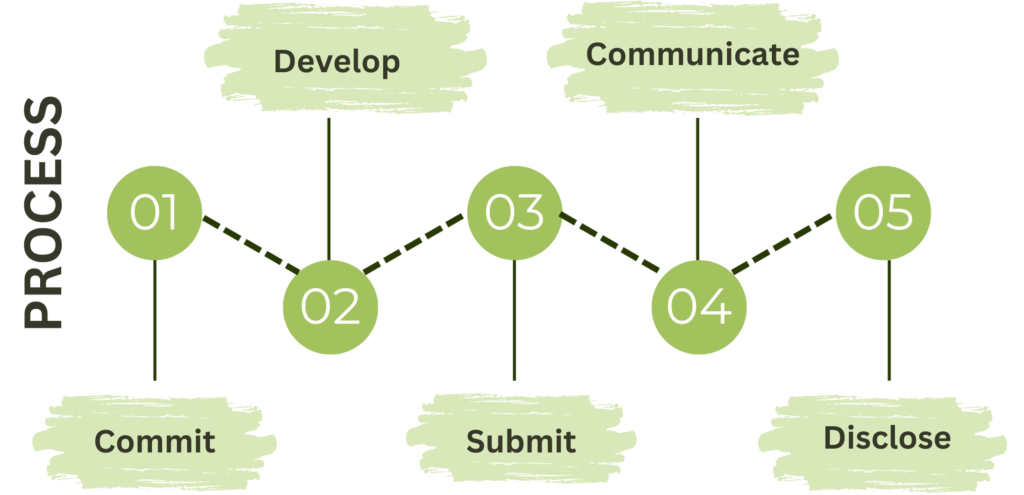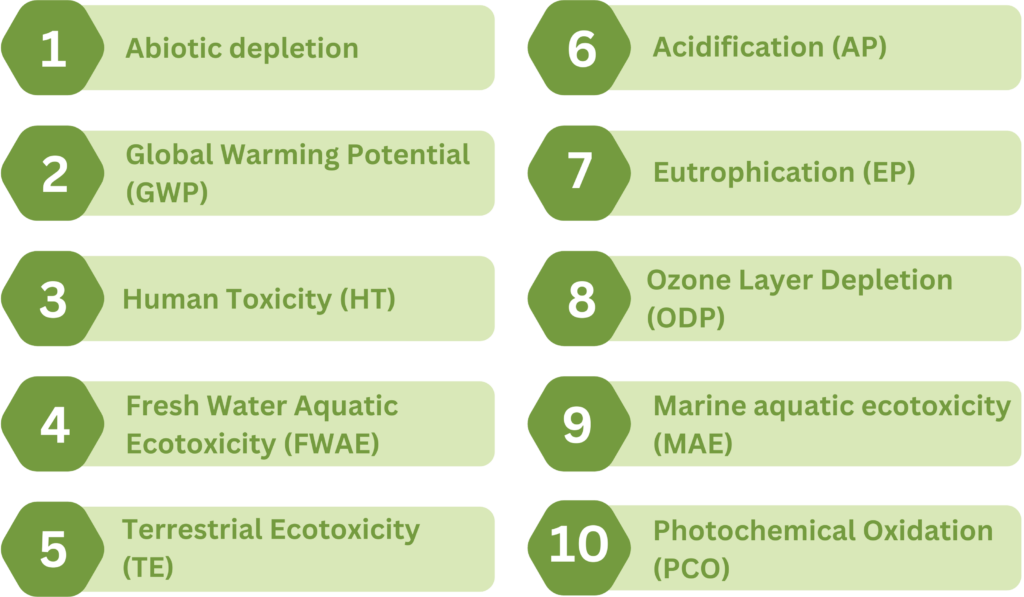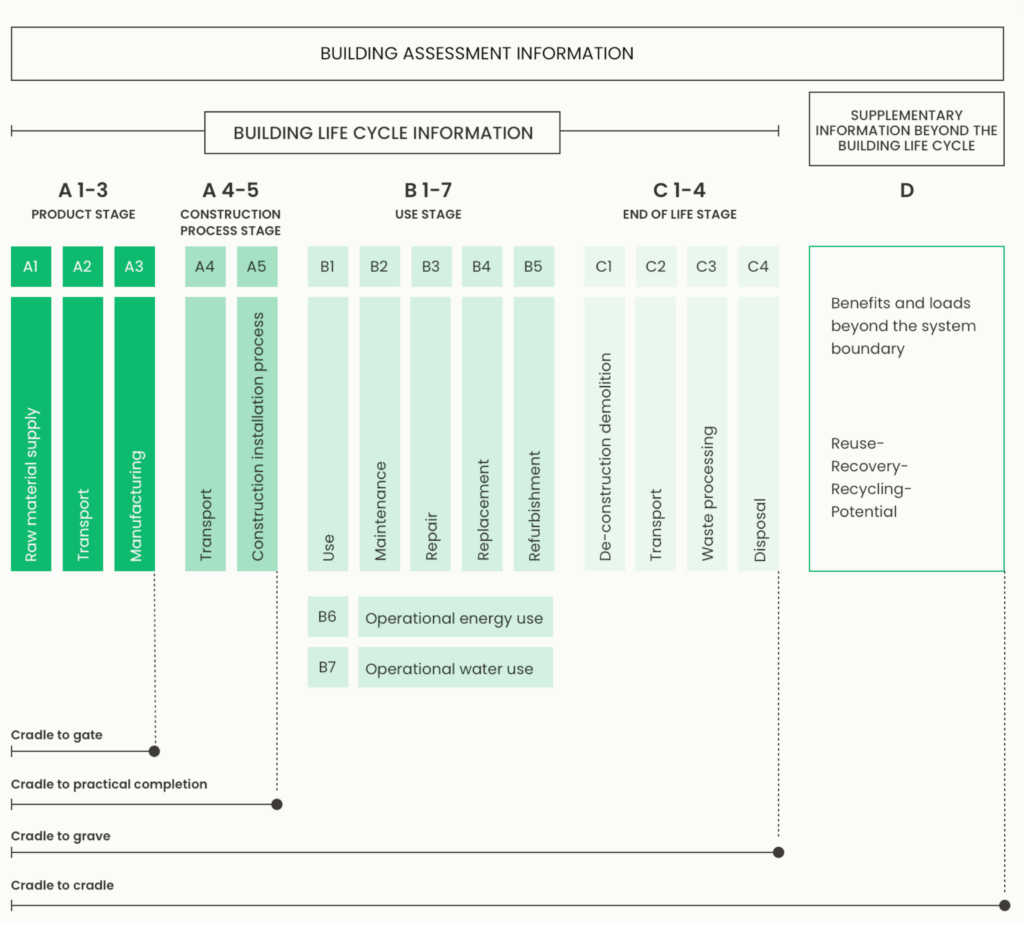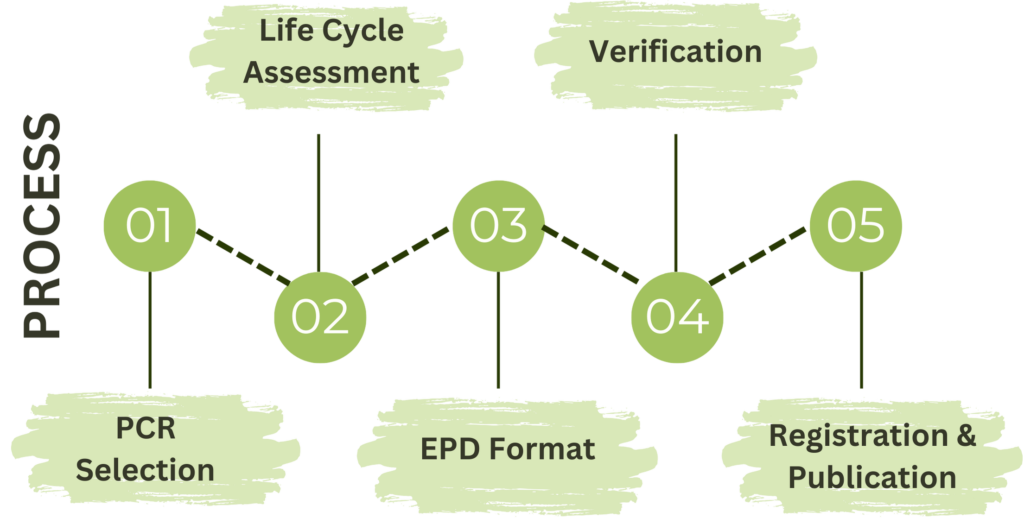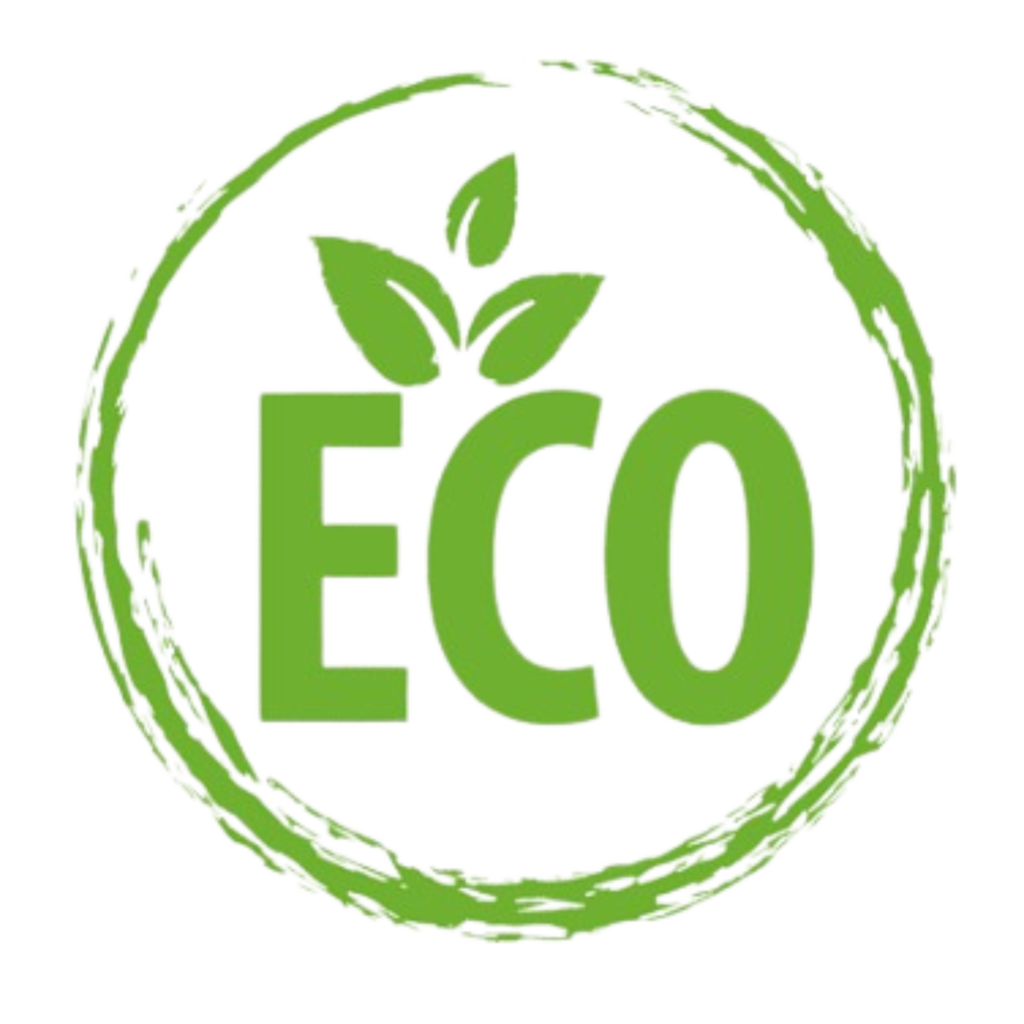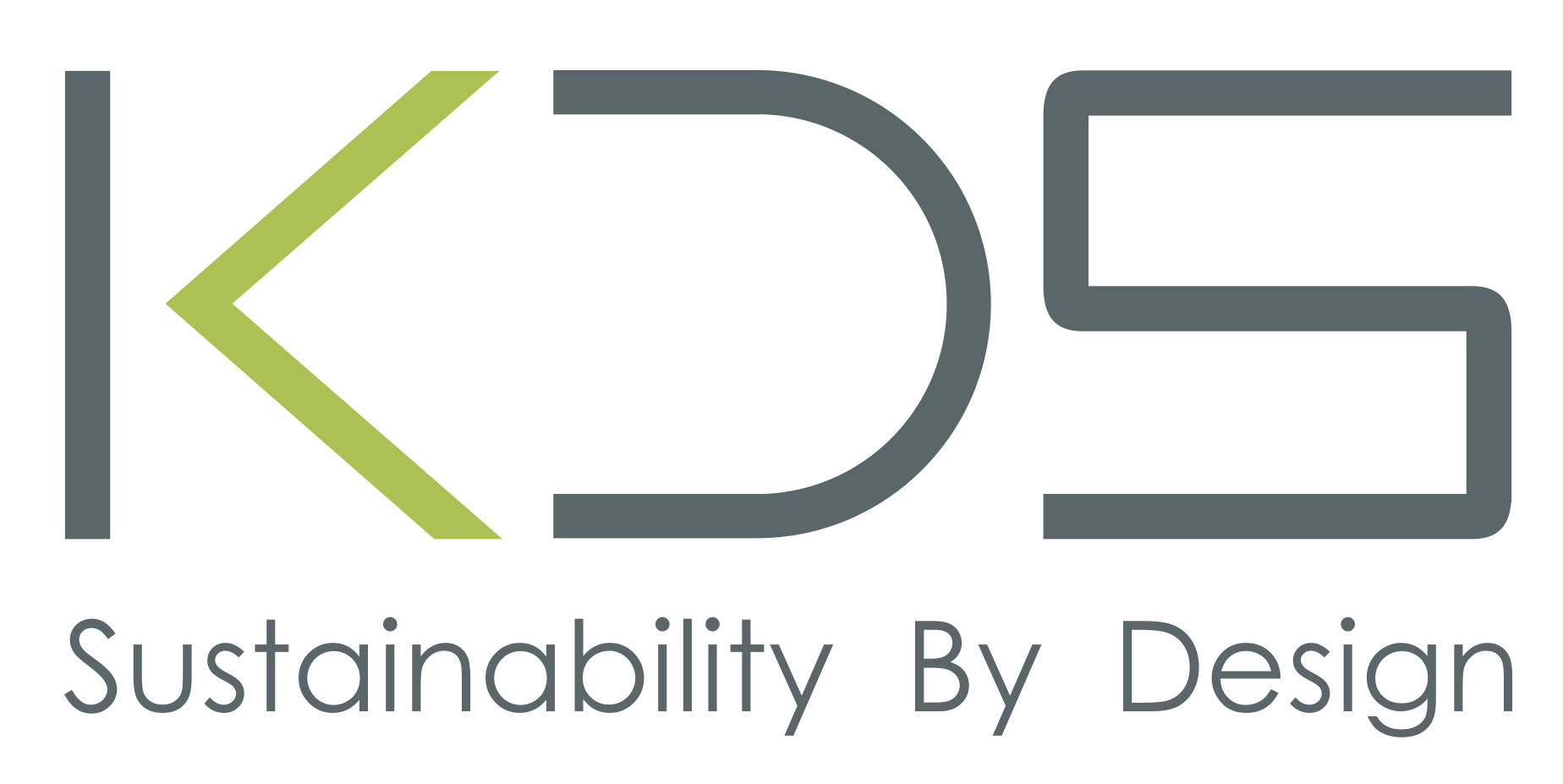
CFP & LCA
Carbon footprint analysis and Life cycle assessment are two of the most important environmental assessment evaluations.
Carbon Footprint Analysis Report
A Carbon Footprint Analysis delves into the quantification and assessment of greenhouse gas (GHG) emissions associated with an entity's activities, providing a comprehensive view of its environmental impact. This analysis involves several critical steps:
- Executive Summary: A concise overview of the Carbon Footprint Analysis, highlighting key findings, emission hotspots, and recommended mitigation strategies.
- Introduction: An introduction to the report, outlining the objectives, scope, and methodology used for assessing the carbon footprint.
- Phase wise emissions: Detailed assessment of GHG emissions generated during the construction or manufacturing phase, including material usage and onsite activities. Analysis of emissions during the operational phase, focusing on energy consumption, transportation, and maintenance activities.
- Carbon Saving: Evaluation of carbon reduction efforts and savings achieved through implemented measures or potential opportunities.
- Mitigation Measures and Conclusion: Recommendations for further emission reductions and a summary of the overall findings and proposed actions.
- Sequestration: Detailed information on carbon sequestration efforts, including methods, areas of application, and estimated offsets.
GHG Reduction Strategies
Implementing effective GHG reduction strategies is essential for mitigating climate change impacts. Our experts design and deploy tailored strategies that align with your business objectives, focusing on energy efficiency, renewable energy integration, and process optimization. By reducing GHG emissions, you can achieve sustainability targets and demonstrate leadership in environmental stewardship.
GHG Reduction Strategies are plans and actions implemented to decrease greenhouse gas emissions from an organization’s operations. Reducing GHG emissions is vital for mitigating climate change, improving operational efficiency, and meeting sustainability targets. It also enhances corporate reputation and stakeholder trust.
Guidelines Followed:
- ISO 14064: Specification with guidance at the organization level for quantification and reporting of GHG emissions and removals.
- ISO 14067: Greenhouse gases — Carbon footprint of products
- The Greenhouse Gas Protocol: A corporate accounting and reporting standard.
Carbon Border Adjustment Mechanism (CBAM)
The Carbon Border Adjustment Mechanism (CBAM) is a policy or border tax by the European Union that ensures certain carbon intensive imported goods are charged for their carbon emissions. It aims to encourage sustainable practices and reduce carbon footprint.
For each quarter, a report must be submitted detailing the total quantity of goods imported during the preceding quarter, the total embedded direct and indirect emissions associated with those goods, and the carbon price applied in the country of origin for those embedded emissions.
Transitional phase: October 2023 - December 2025
CBAM focuses on monitoring and reporting only. It does not involve any financial adjustments or the need to purchase certificates. The goal is to ensure a seamless and uninterrupted rollout of the mechanism.
Review and scope extension: 2025
The European Commission will use the reported information for general analysis and review of the CBAM
Post transitional phase: 2026 - 2034
From 1 January 2026, only authorised CBAM declarants will be able to import CBAM goods into the European Union. Authorised CBAM declarants will have to buy CBAM certificates that correspond to the emissions in the goods imported.
Science Based Target Initiative (SBTi)
The process of setting and achieving Science-Based Targets (SBTs) for greenhouse gas (GHG) emissions reductions. Leveraging the standards, tools, and guidance developed by the Science Based Targets initiative (SBTi), we help your organization align with the global effort to keep temperature rise well below 2°C and reach net-zero emissions by 2050.
Our services include the full spectrum of SBTi-aligned support, from initial target setting to comprehensive validation. SBTi partnered with leading global organizations such as CDP, the United Nations Global Compact, the We Mean Business Coalition, the World Resources Institute (WRI), and the World Wide Fund for Nature (WWF) to ensure your targets are ambitious, credible, and aligned with the latest climate science. Our expert team is dedicated to providing the strategic insights and technical expertise needed to navigate this critical aspect of corporate climate action.
It Supports businesses in demonstrating commitment to climate action. Provides resources and guidance for implementing effective emission reduction strategies.
Aligns business targets with the Paris Agreement to limit global warming to well below 2°C, preferably to 1.5°C.
Life Cycle Analysis
Life cycle assessment (LCA) is a systematic process for evaluating the environmental impacts of a product, process, or service throughout its entire life cycle, from raw material extraction to disposal or recycling. By examining each stage, including production, transportation, usage, and end-of-life
- Identifying Environmental Hotspots: LCA supports companies in identifying and addressing environmental hotspots. By pinpointing areas with significant environmental impacts, companies can target their efforts to improve sustainability performance effectively
- MOEF Compliances (EAC & SEAC1): We have conducted the Life Cycle Assessment (LCA) of products for the chemical industry, ensuring compliance with the Ministry of Environment, Forest and Climate Change (MOEF) guidelines, including those from the Expert Appraisal Committee (EAC) and State Expert Appraisal Committee (SEAC1). This assessment evaluates the environmental impacts of chemical products throughout their life cycle. Our work supports companies in meeting regulatory requirements and enhancing their sustainability practices.
- All processes are modelled on licensed SimaPro Software.
Product Carbon Footprint
A Product's Carbon Footprint refers to the total amount of greenhouse gases (GHGs) emitted throughout its life cycle, from raw material extraction and manufacturing to transportation, use, and disposal. The carbon footprint is typically measured in units of carbon dioxide equivalents (CO2e), which accounts for the different global warming potentials of various greenhouse gases.
ISO 14067:2018 is a international standard specifically for Carbon Footprint of Products. This standard specifies principles, requirements, and guidelines for quantifying and reporting product carbon footprints (PCF)
ISO 14040 and ISO 14044 together provide a comprehensive framework for conducting Life Cycle Assessments (LCA). Life Cycle Assessment framework considers all stages from raw material extraction through manufacturing, use, and disposal or recycling.
The GHG Protocol Product Standard is a framework for measuring and reporting the greenhouse gas emissions associated with goods and services throughout their life cycles
Whole Building Life Cycle Assessment
Conducting Whole Building Life Cycle Assessments (WBLCA) allows companies to evaluate the environmental impacts of their buildings from material extraction to demolition.
This process analyzes energy use, emissions, and resource consumption, providing insights into sustainability performance. WBLCAs help organizations reduce their environmental footprint and align with industry standards like IGBC Net Zero and LEED, making them essential for sustainable building practices.
For industrial buildings, WBLCAs are crucial for optimizing resource use, reducing operational costs, and enhancing environmental performance.
In commercial and residential buildings, these assessments improve design and material choices, helping achieve higher certifications and contributing to broader sustainability goals.
The assessment is done in 4 stages:
A1-A3 : Product Stage
A4-A5 : Construction stage
B1-B5 : Use Stage
C1-C4: End of life stage
Environmental Product Declarations
Environmental Product Declarations (EPD) is a transparent, standardized report that communicates the environmental impact of your products throughout their life cycle, from raw material extraction to disposal. It is a key tool for companies aiming to demonstrate their commitment to sustainability and meet the increasing demand for eco-friendly products. EPDs are crucial for product transparency, helping consumers and businesses make informed decisions based on environmental performance. An internationally recognized EPD, improving product credibility and marketability. Our EPD services include a thorough life cycle assessment (LCA) of your product, followed by data collection, analysis, and reporting in accordance with international standards. We work closely with you to ensure that all relevant environmental impacts are accurately captured and presented in the EPD.
GreenPro
GreenPro is an ecolabel for products, materials, and technologies that meet stringent criteria for environmental performance, promoting sustainable construction practices. The EcoLabelled green products contribute significantly for enhancing the performance of Green Buildings in terms of reducing resource consumption and enhancing the health and well-being of the occupants. These EcoLabelled products contribute to Green Buildings in various ways.
The companies can register for it who deals with
Building Products :Cement, PV panels, Construction chemicals, etc.
Industrial Products :Cooling towers, Pumping systems, Machineries, etc.
Consumer Products: Bags, Cleaning chemicals, Packaging materials, etc.
Comparison Study
In a comparison study of two products with the same function, we assess their environmental impacts across their life cycles by evaluating resource use, emissions, and waste. This helps identify which product has a lower environmental footprint and better sustainability, guiding more eco-friendly choices.
Ecomark
An ecolabel is a certification given to products or services that meet defined environmental performance standards. These labels guide consumers in selecting items that minimize environmental impact across their entire lifecycle, from production to disposal. By encouraging sustainable practices, ecolabels help protect the environment and enable informed consumer decisions.
Ecomark is an eco-label awarded to products meeting specific environmental criteria, indicating a reduced impact on the environment. Ecomark helps consumers identify environmentally friendly products, supporting sustainable consumption. Ecomark-certified products that appeal to environmentally conscious consumers.
Process: Involves product evaluation against predefined environmental standards, application, and certification
Guidelines Followed: Ecomark Standards by the Bureau of Indian Standards.
